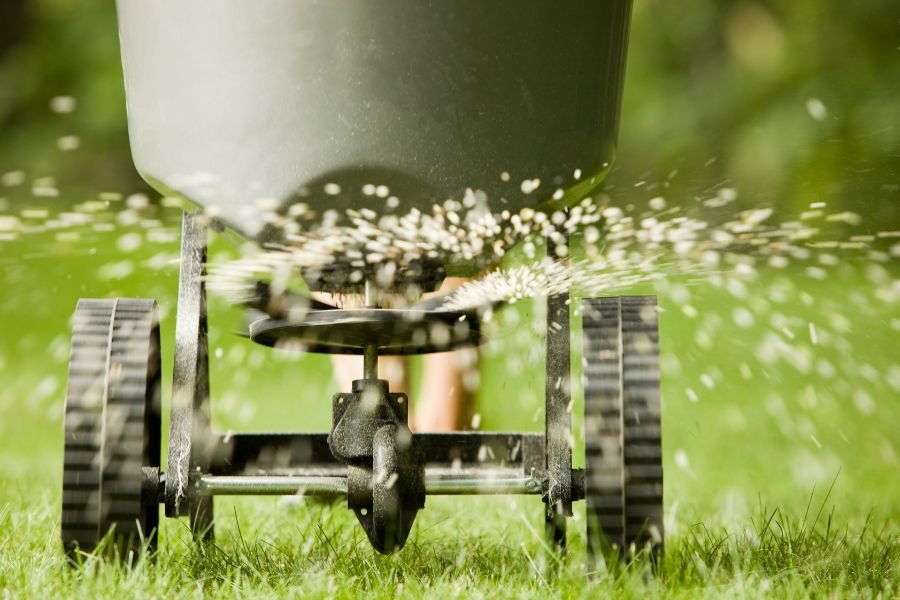Maintaining a lush, healthy lawn requires more than just watering and mowing. Proper fertilization plays a critical role in ensuring your grass thrives throughout the year. Among the many types of fertilizers available, liquid lawn fertilizers stand out for their ease of application and quick absorption by plants. However, choosing the right product for your lawn involves understanding its specific needs and how different formulations work. This guide will help you navigate the process and make an informed decision.
Why Choose Liquid Lawn Fertilizers?
Liquid lawn fertilizers are popular due to their:
- Quick Results: These fertilizers are absorbed rapidly, providing immediate nutrients to the grass.
- Uniform Application: When applied correctly, they cover the lawn evenly, minimizing the risk of over- or under-fertilization.
- Customizability: Liquid formulations allow for mixing with other lawn care products like herbicides or pesticides.
- Ease of Use: They can be sprayed using simple equipment, reducing physical effort and time compared to granular fertilizers.
Key Factors to Consider When Choosing Liquid Lawn Fertilizers
1. Assess Your Lawn’s Nutritional Needs
Every lawn has unique nutrient requirements based on soil type, grass species, and climate. Conducting a soil test is the first step to identifying deficiencies in nitrogen (N), phosphorus (P), or potassium (K).
- Nitrogen (N) promotes green, lush growth.
- Phosphorus (P) supports root development and is crucial for newly seeded lawns.
- Potassium (K) enhances stress resistance and overall health.
For example, if your lawn looks pale or grows slowly, it might need a nitrogen-rich fertilizer.
2. Understand NPK Ratios
The NPK ratio on the fertilizer label indicates the percentage of nitrogen, phosphorus, and potassium in the product. Choose an NPK ratio that aligns with your lawn’s needs:
- High nitrogen (e.g., 15-5-5): Best for established lawns that need vigorous growth.
- Balanced ratio (e.g., 10-10-10): Ideal for general maintenance.
- Low phosphorus (e.g., 15-0-15): Suitable for areas with phosphorus runoff regulations or mature lawns.
3. Organic vs. Synthetic Fertilizers
Liquid lawn fertilizers are available in both organic and synthetic forms.
- Organic Fertilizers: Made from natural sources like compost or seaweed extract. They release nutrients slowly, improve soil health, and are environmentally friendly.
- Synthetic Fertilizers: Chemically formulated for quick absorption. They offer immediate results but may require careful application to avoid over-fertilization.
4. Consider Lawn Condition and Season
Choose a product tailored to the current state of your lawn and the time of year:
- Spring: Focus on nitrogen-rich fertilizers to encourage growth after dormancy.
- Summer: Use fertilizers with higher potassium to help grass withstand heat and drought.
- Fall: Apply fertilizers with balanced NPK ratios to prepare the lawn for winter.
5. Ease of Application
Liquid fertilizers can be applied using a hose-end sprayer or a backpack sprayer. Look for products with clear instructions on dilution and application to ensure proper coverage. Some liquid fertilizers come pre-mixed, offering additional convenience.
6. Additional Ingredients
Many liquid fertilizers include supplementary components to enhance their effectiveness:
- Micronutrients: Such as iron, zinc, and magnesium, to address specific deficiencies.
- Humic Acid or Seaweed Extract: Improves soil health and nutrient uptake.
- Weed and Pest Control: Some products combine fertilization with herbicides or pesticides for an all-in-one solution.
7. Environmental Considerations
Ensure the product you choose is safe for the environment, especially if your lawn is near waterways. Look for low-phosphorus options or products labeled as “slow-release” to minimize nutrient runoff.
Top Tips for Using Liquid Lawn Fertilizers
- Follow Application Rates: Over-application can burn your lawn or harm the environment.
- Apply at the Right Time: Early morning or late afternoon are ideal to reduce evaporation and maximize absorption.
- Water After Application: Light watering helps nutrients penetrate the soil effectively.
- Repeat as Needed: Follow the recommended schedule, typically every 4-6 weeks during the growing season.
Conclusion
Selecting the right liquid lawn fertilizer is crucial for achieving a vibrant, healthy lawn. By assessing your lawn’s needs, understanding NPK ratios, and considering factors like seasonality and environmental impact, you can make an informed decision. Whether you opt for organic or synthetic, proper application is key to ensuring your lawn flourishes year-round.
Invest in a high-quality liquid lawn fertilizer today and give your lawn the nutrients it deserves for lasting beauty and vitality.


